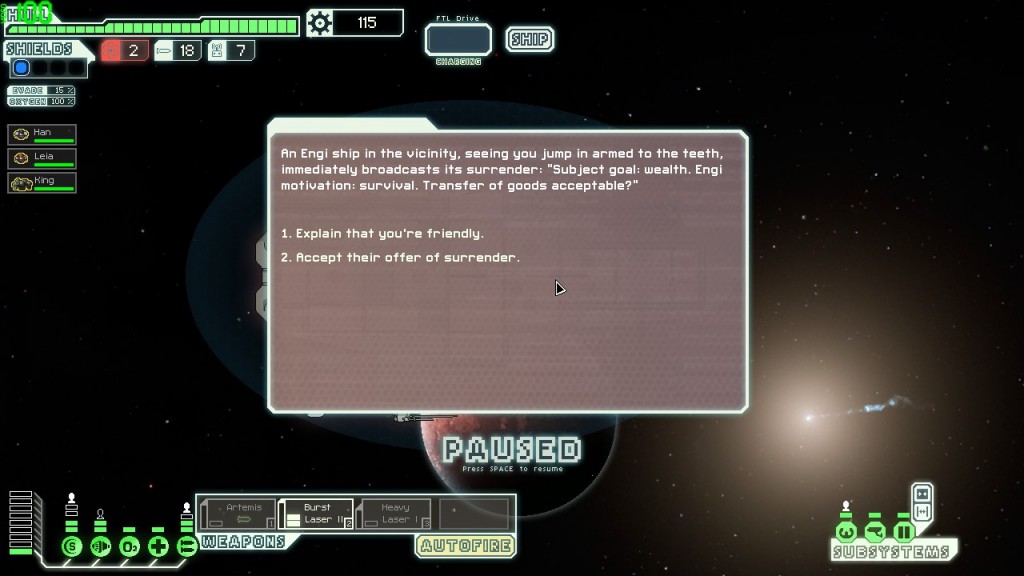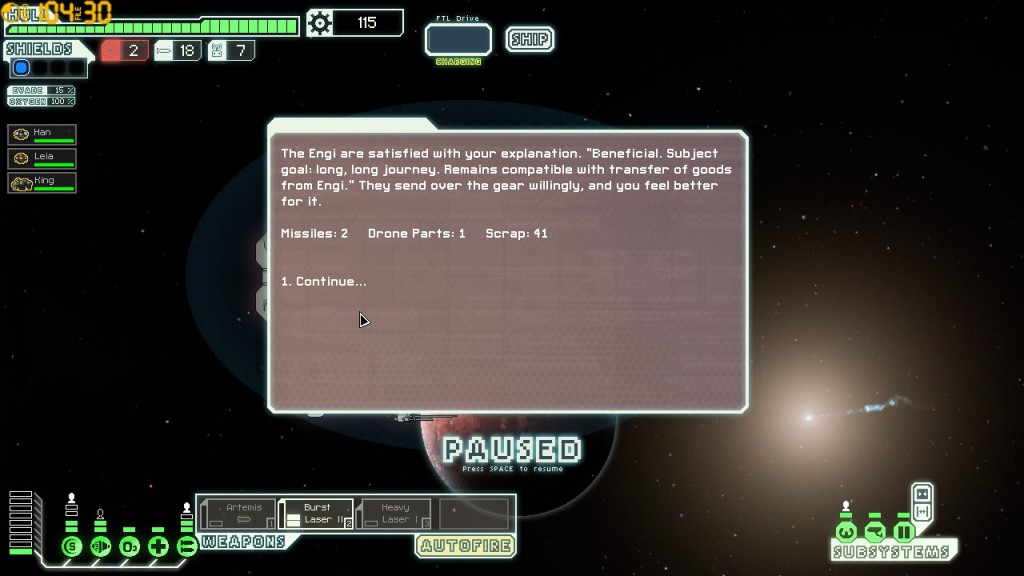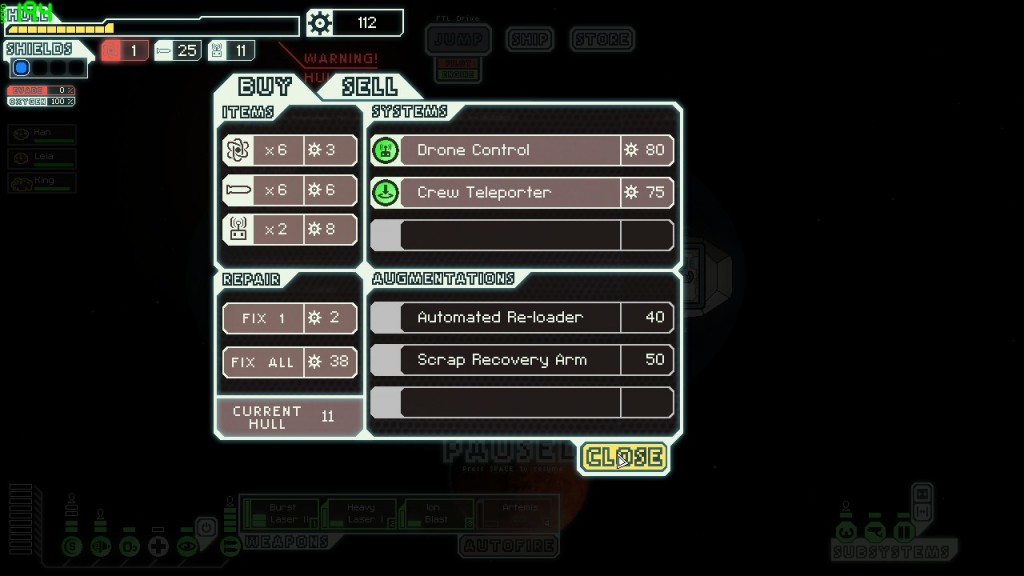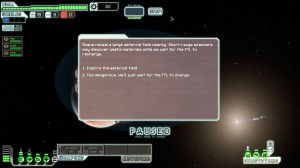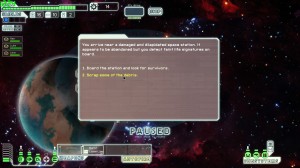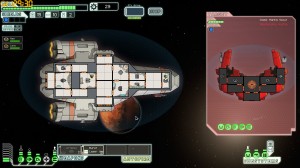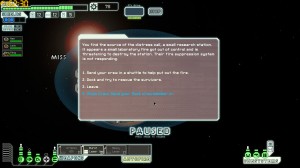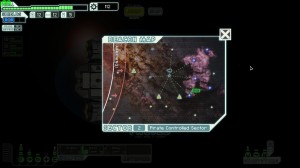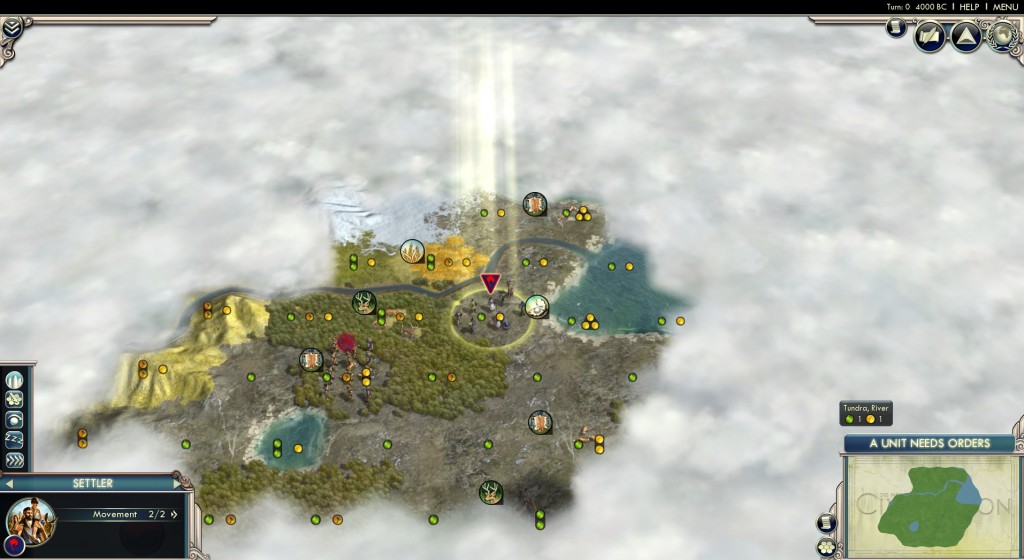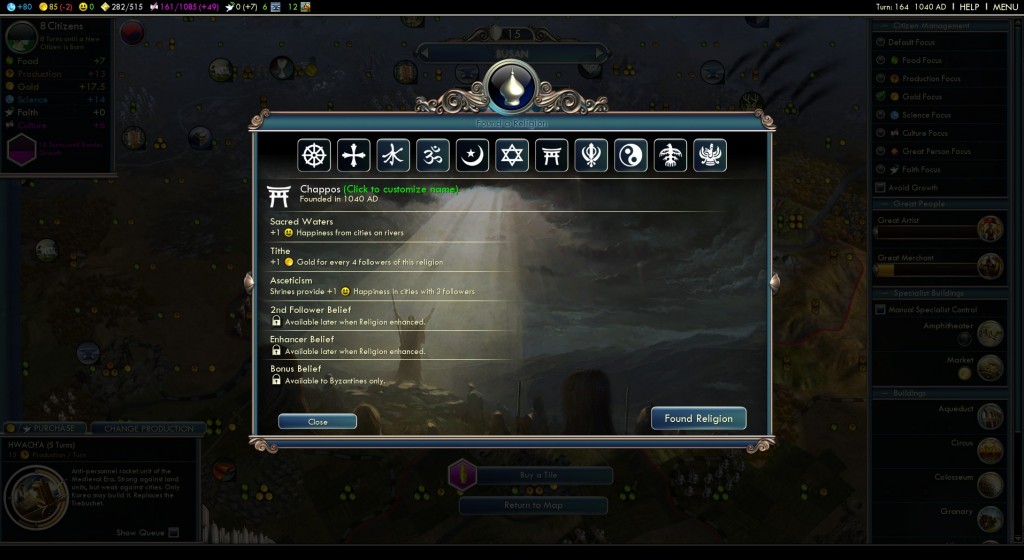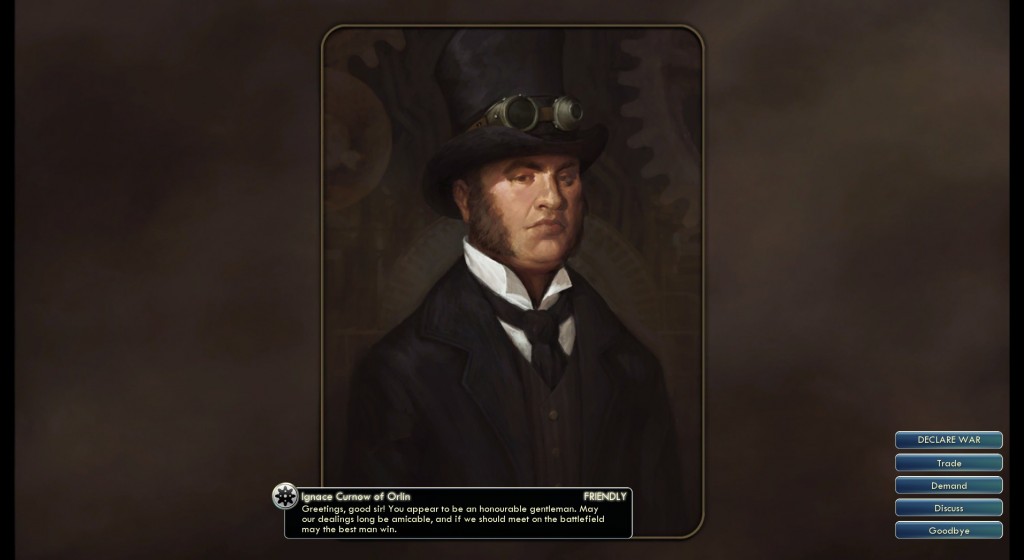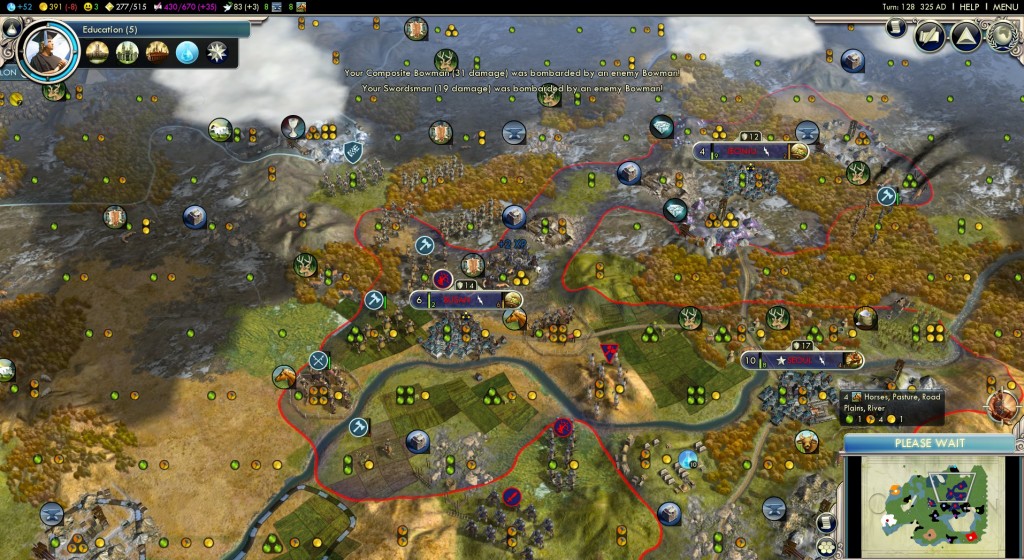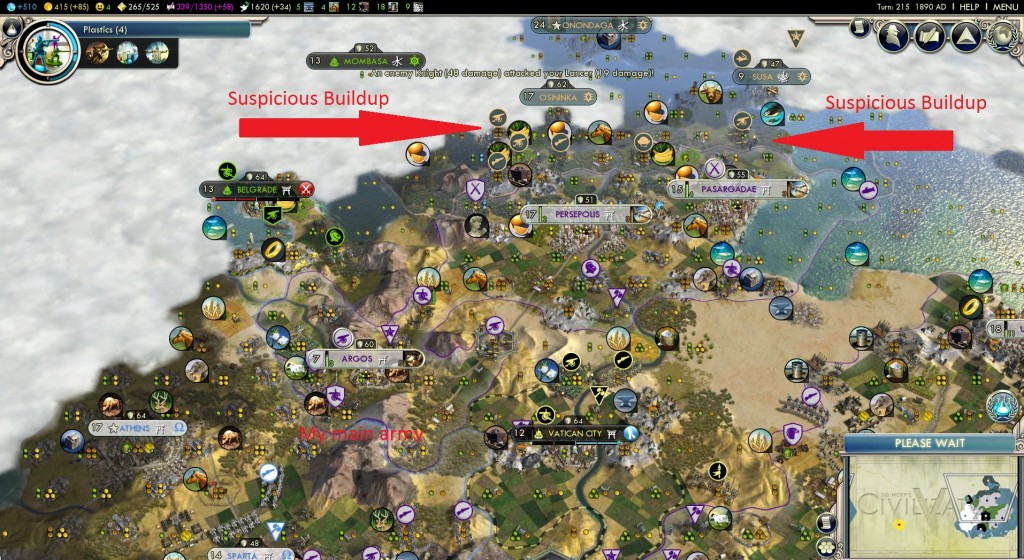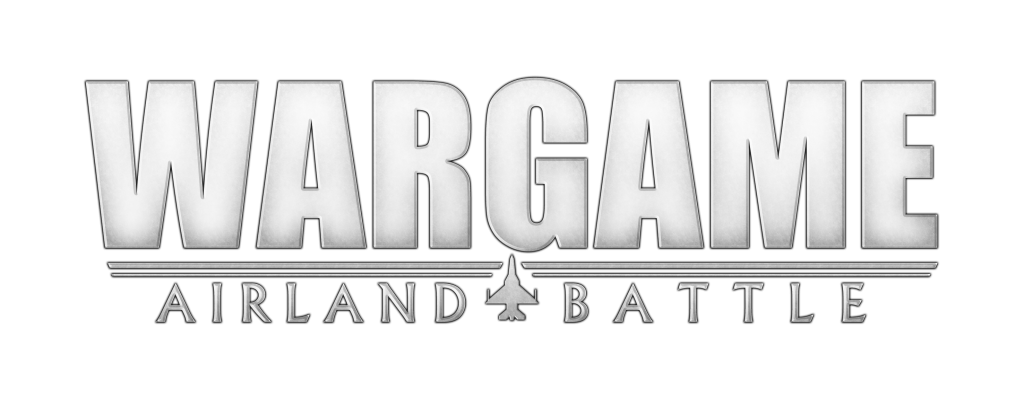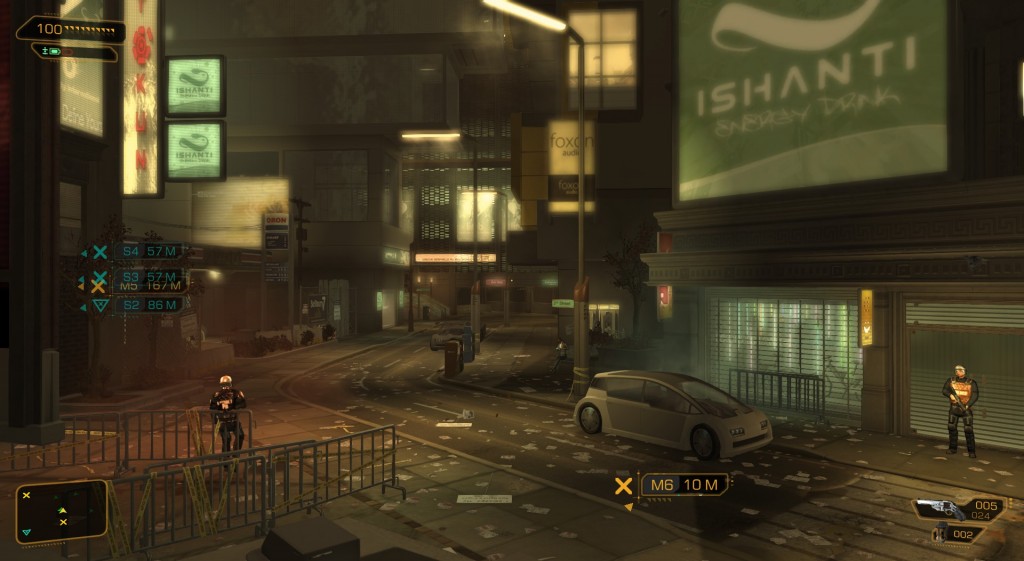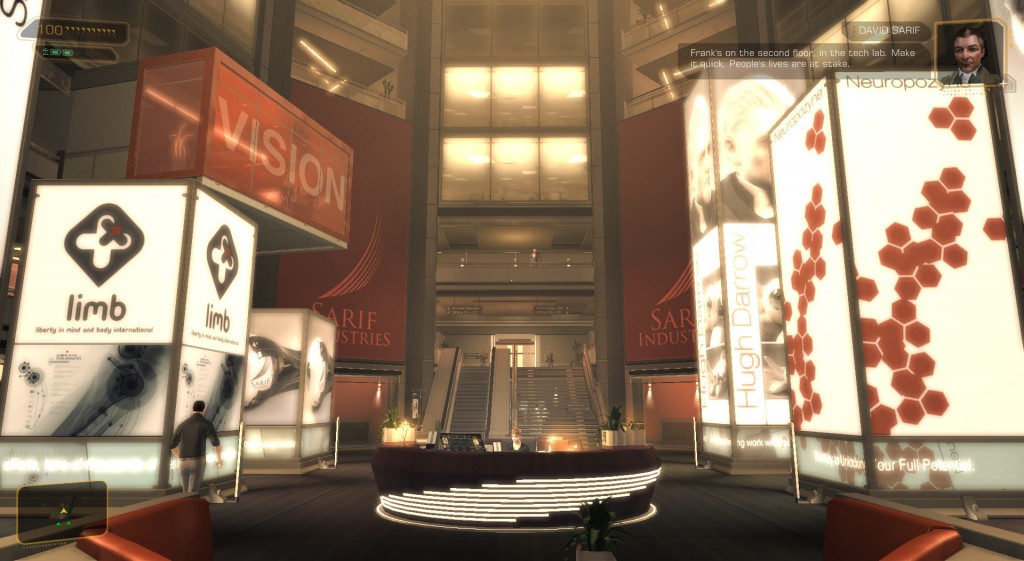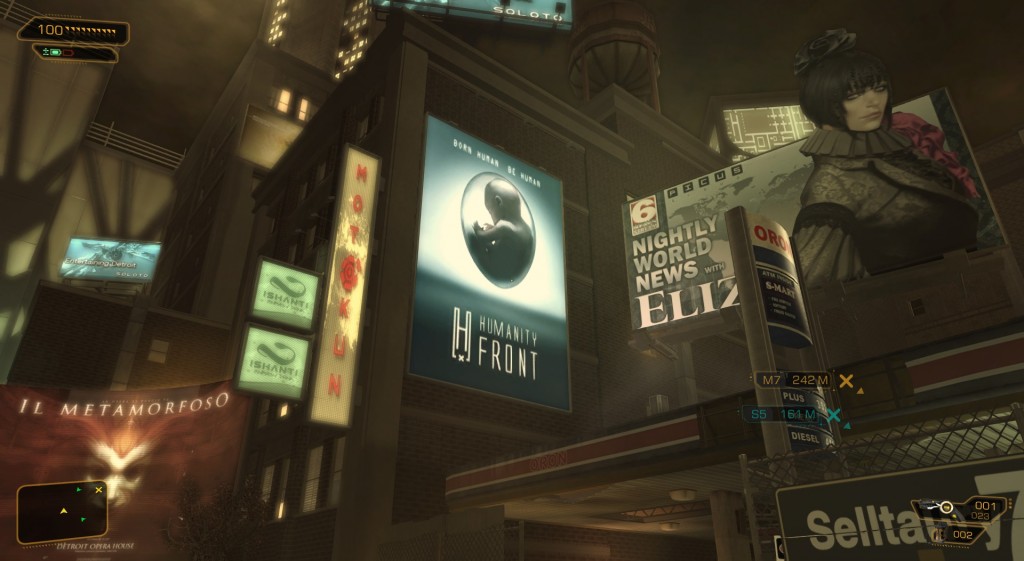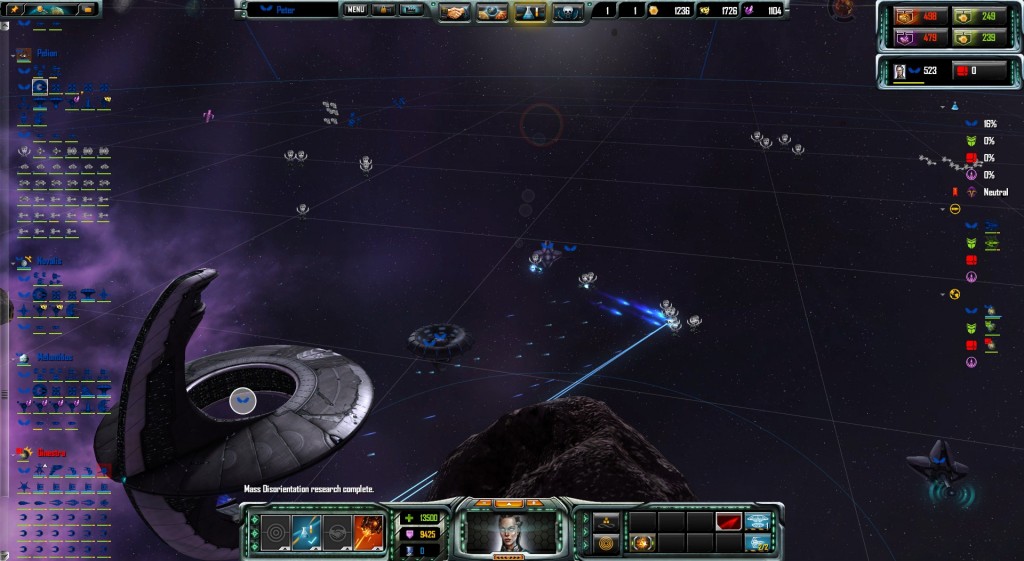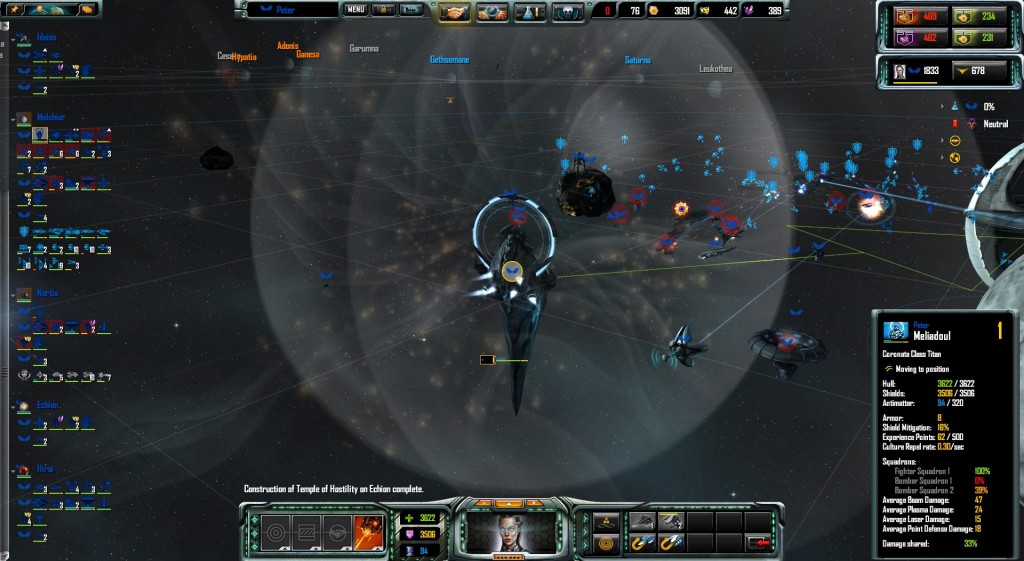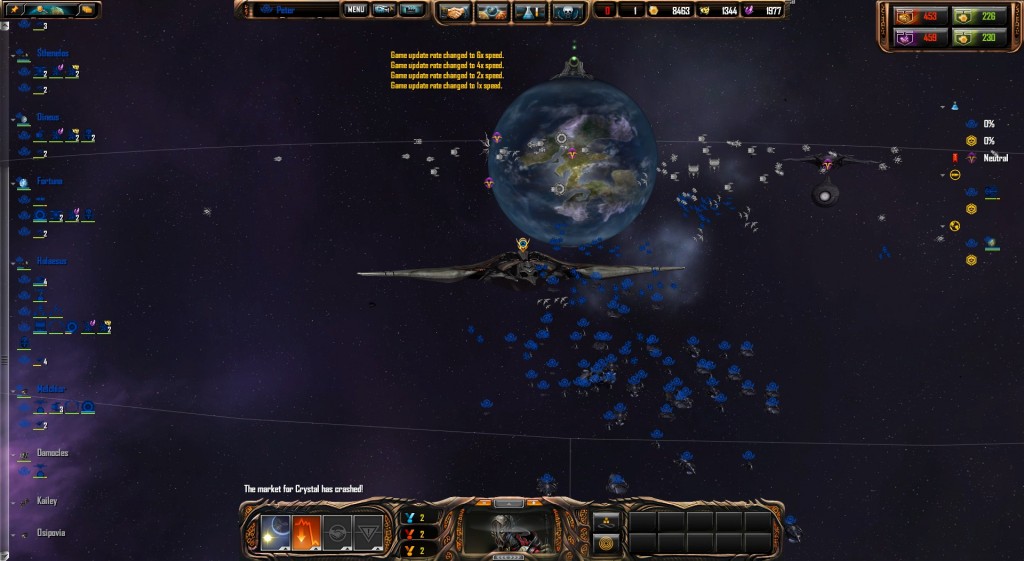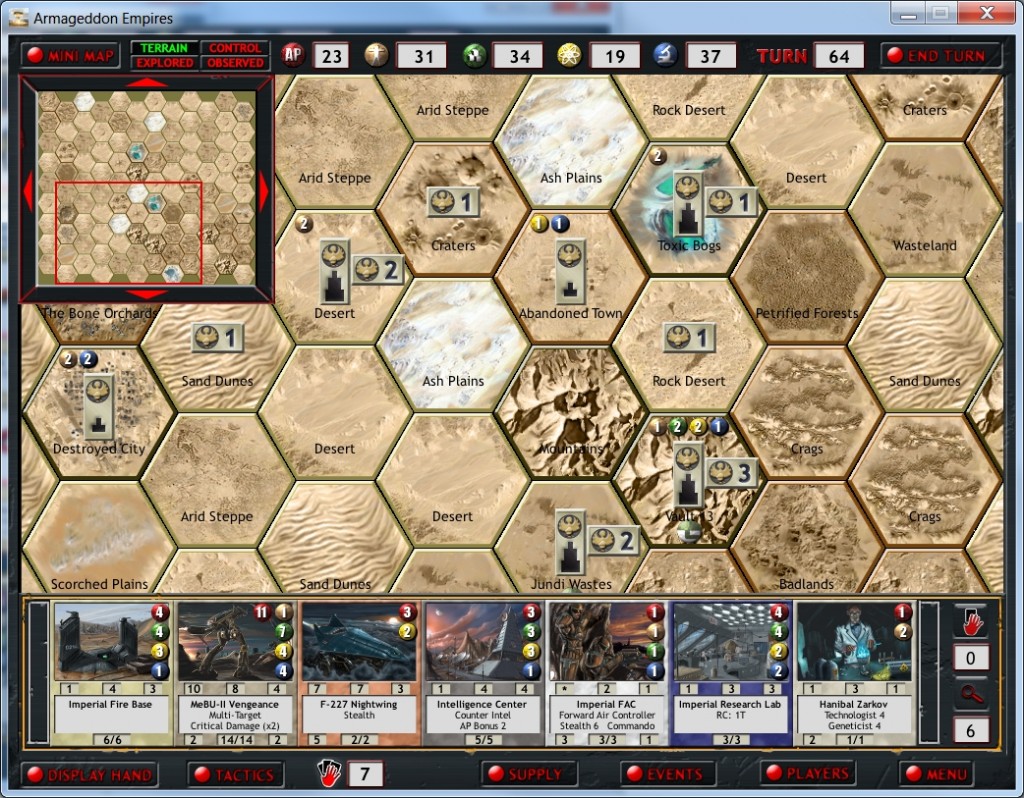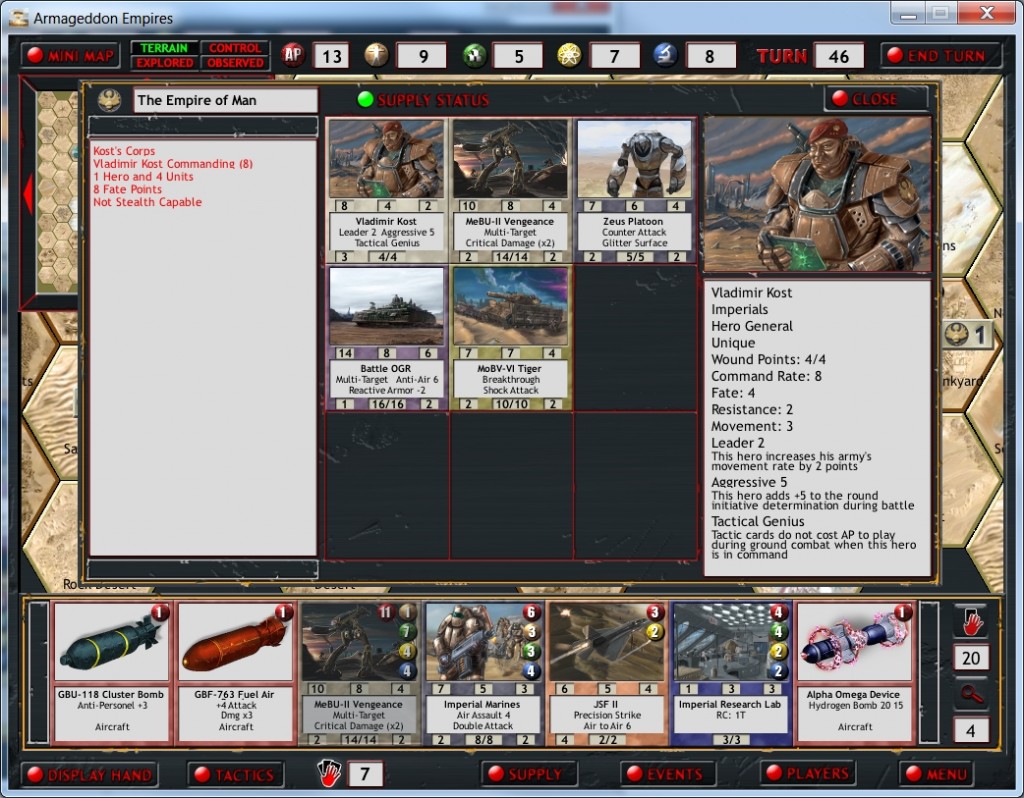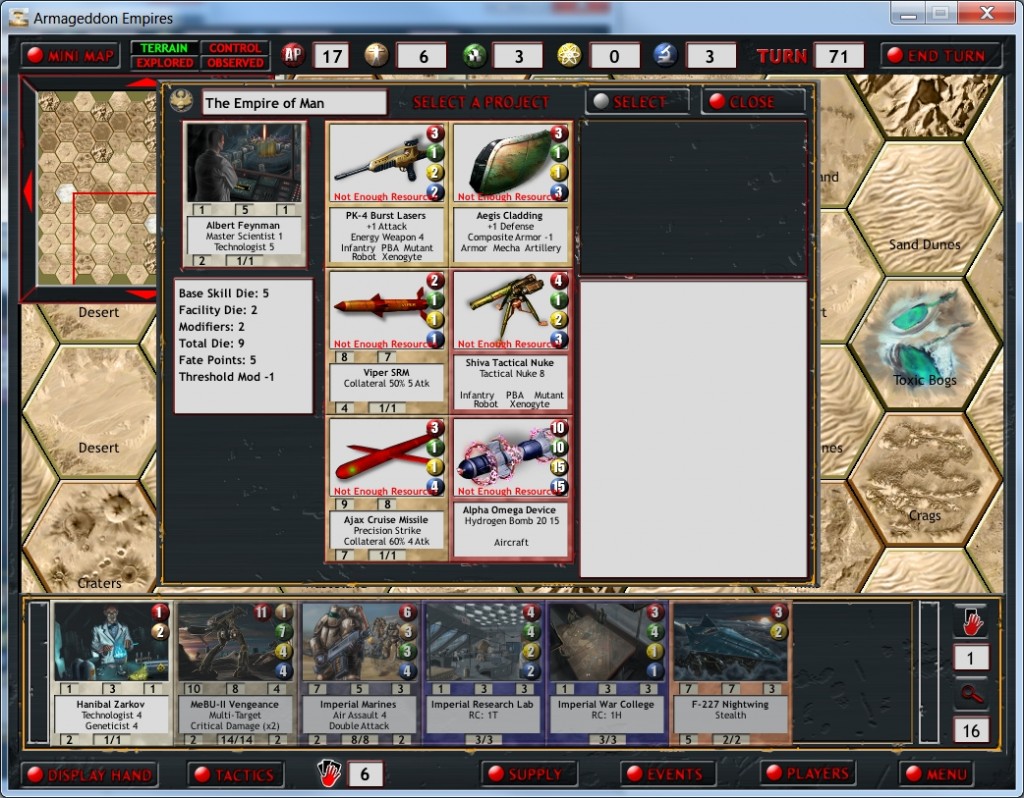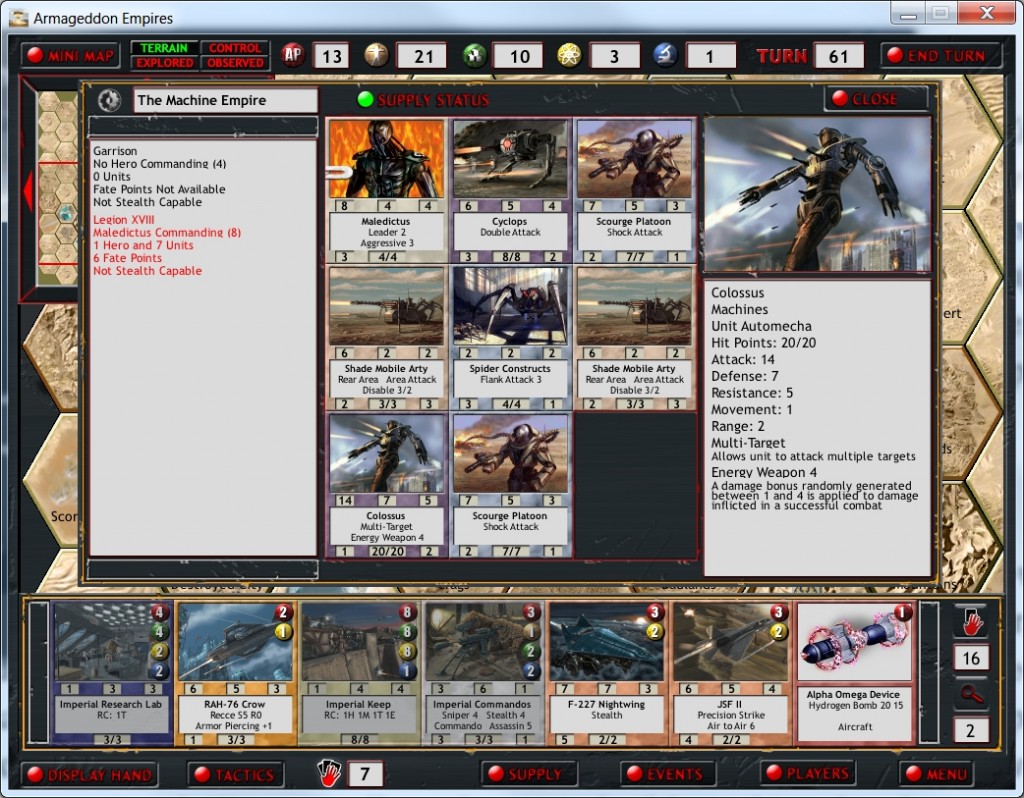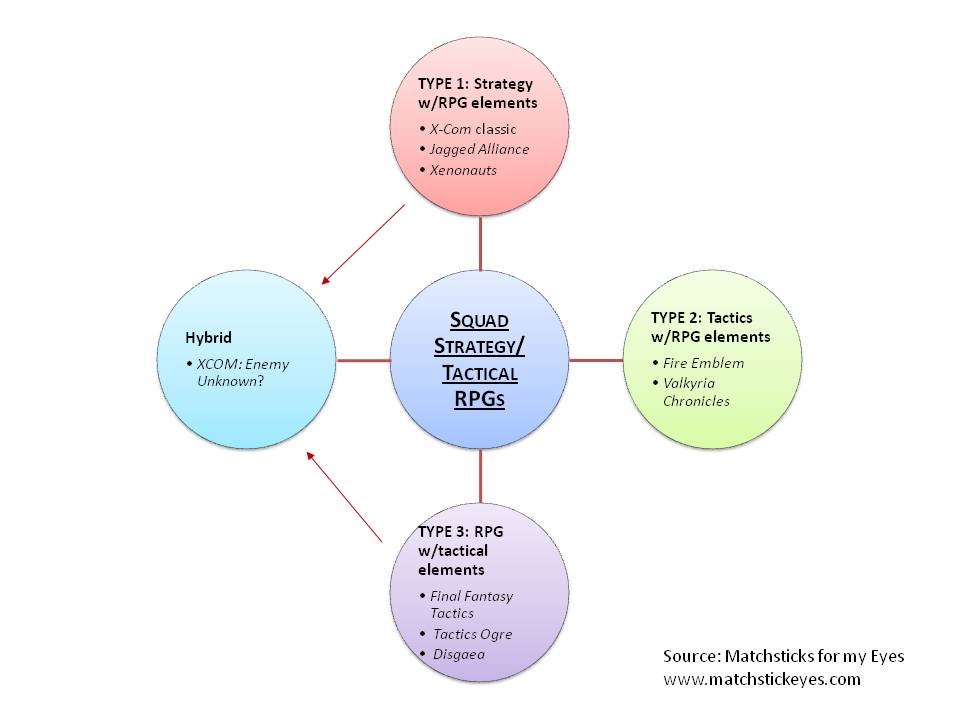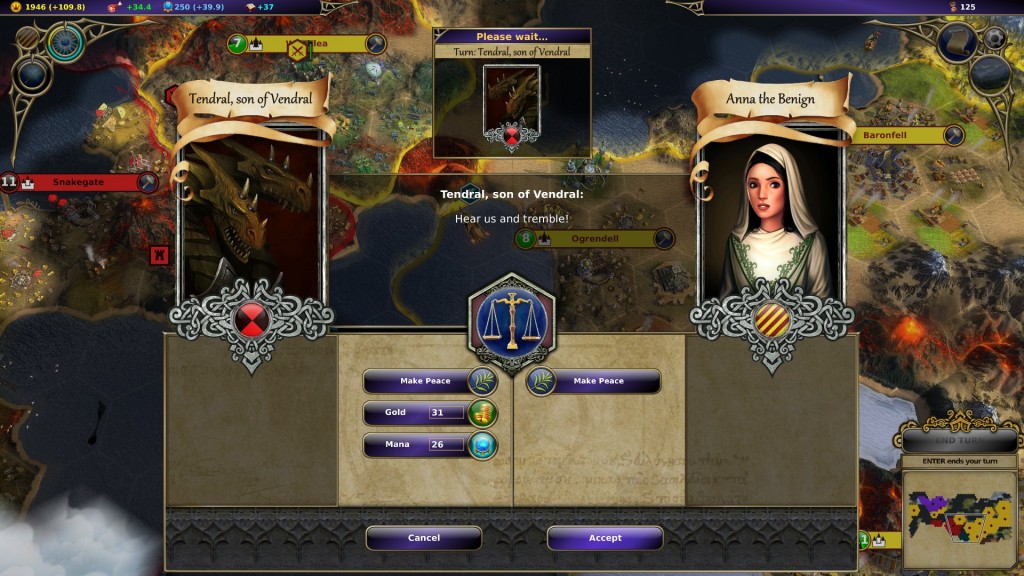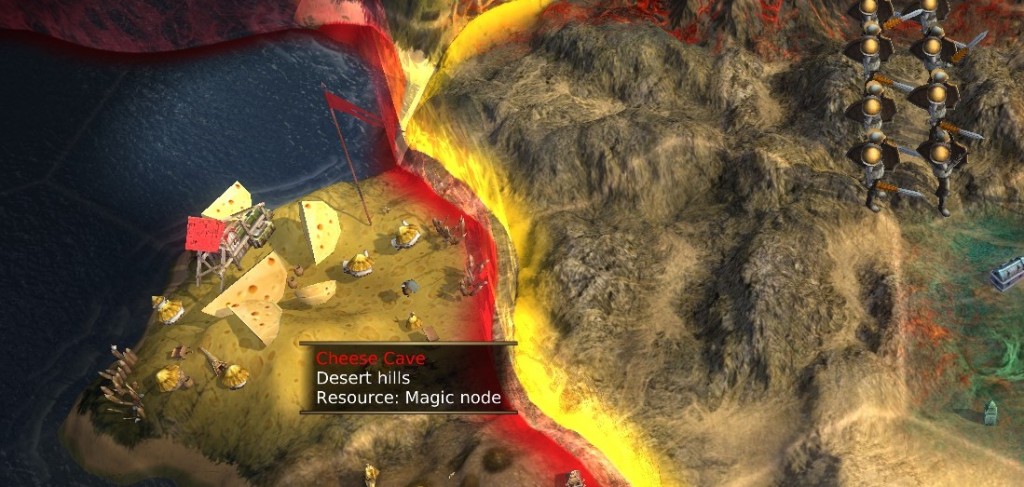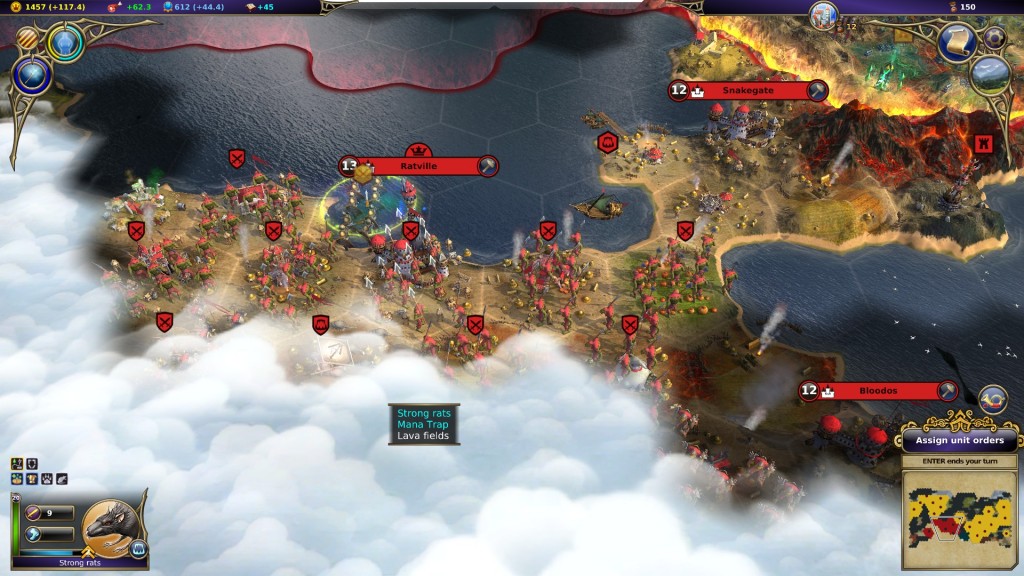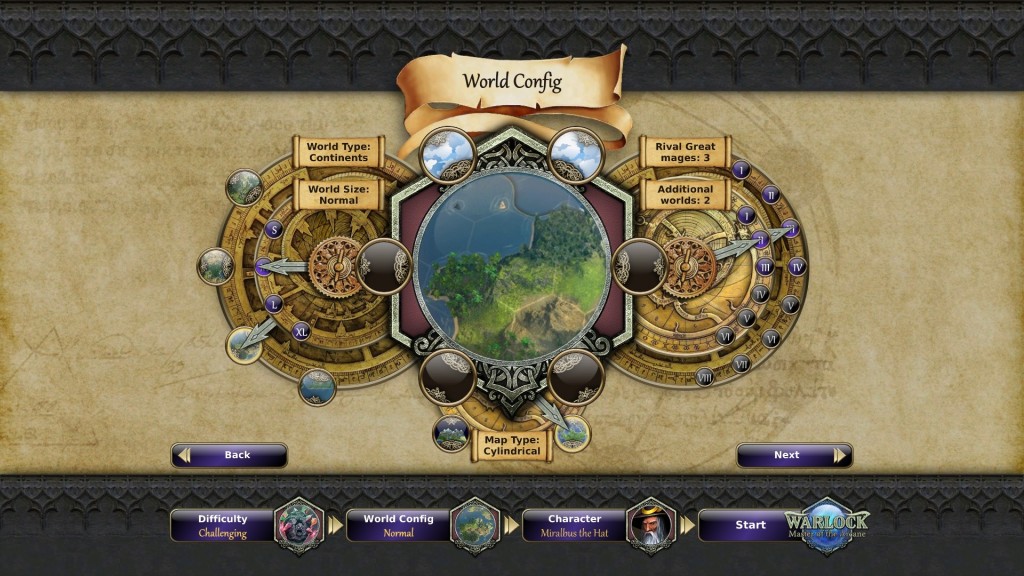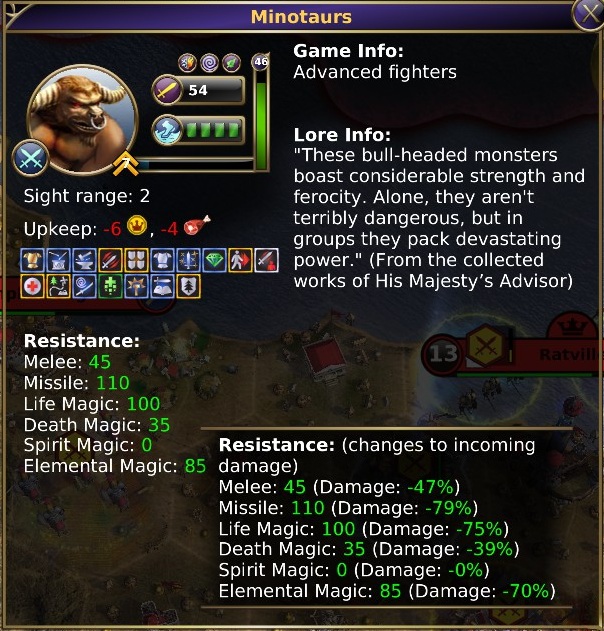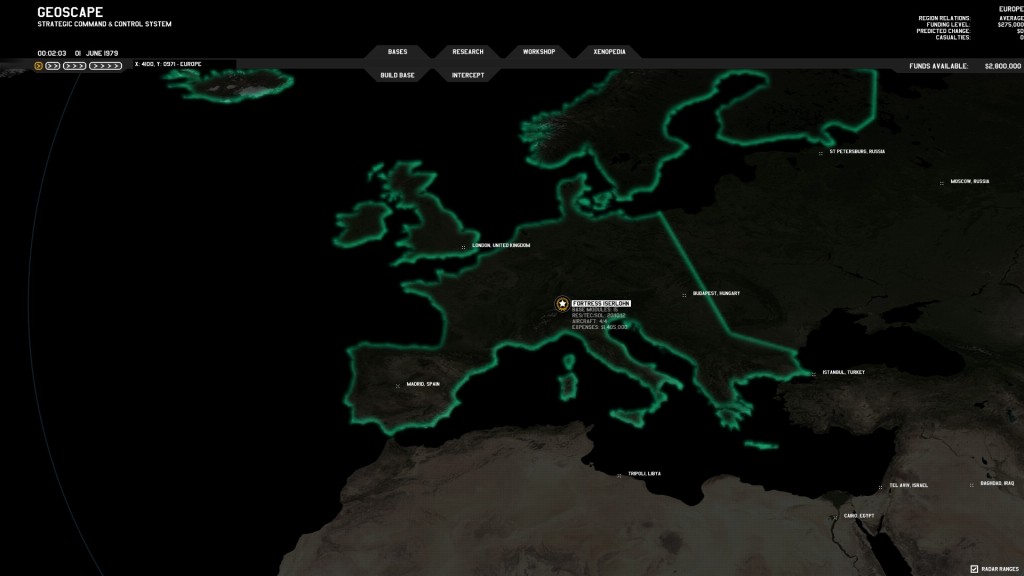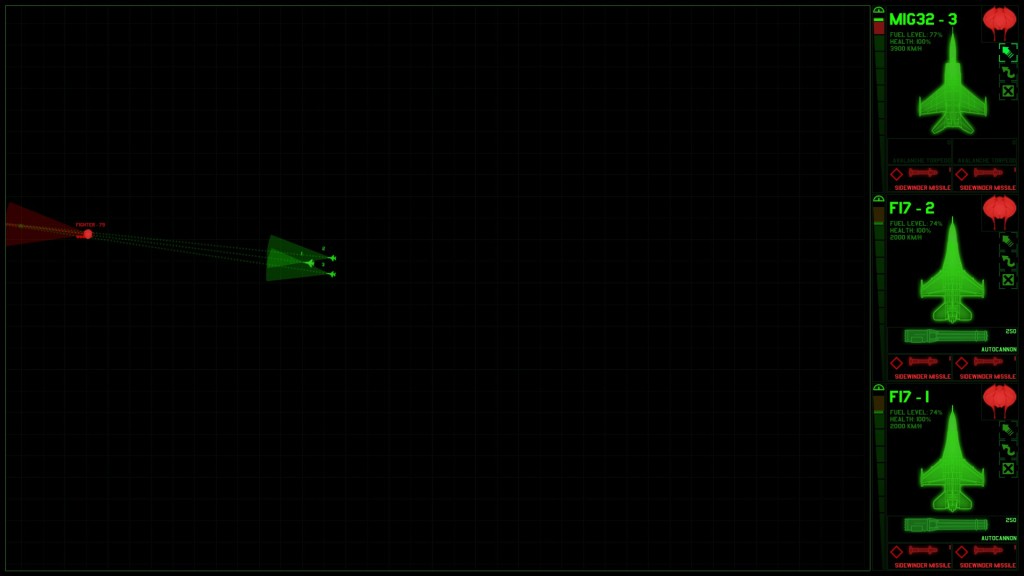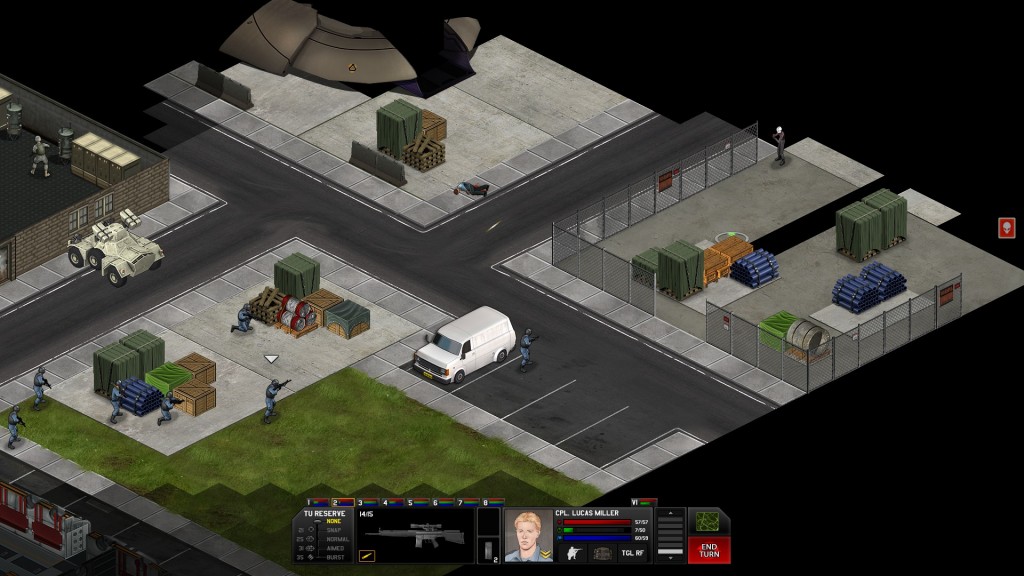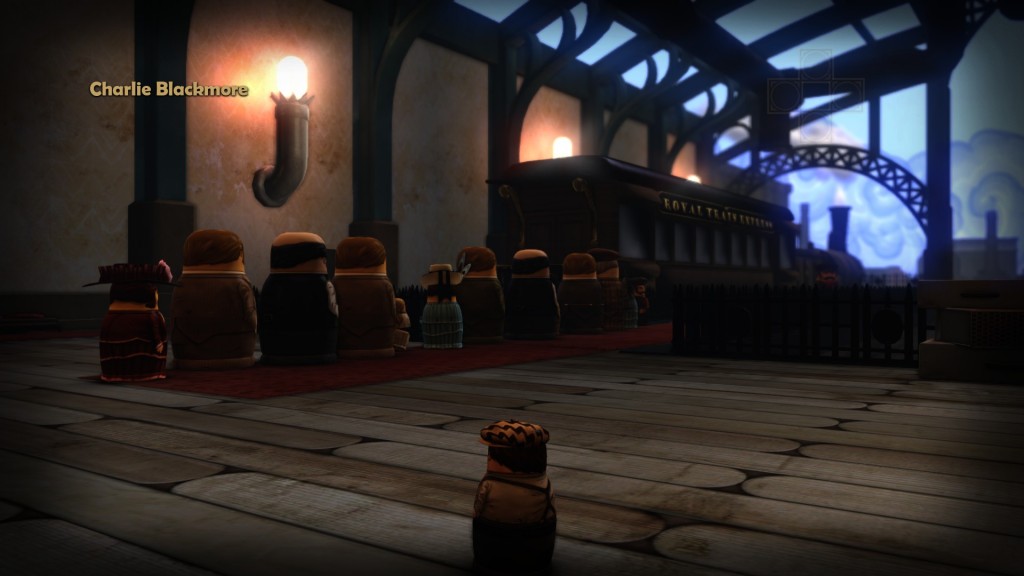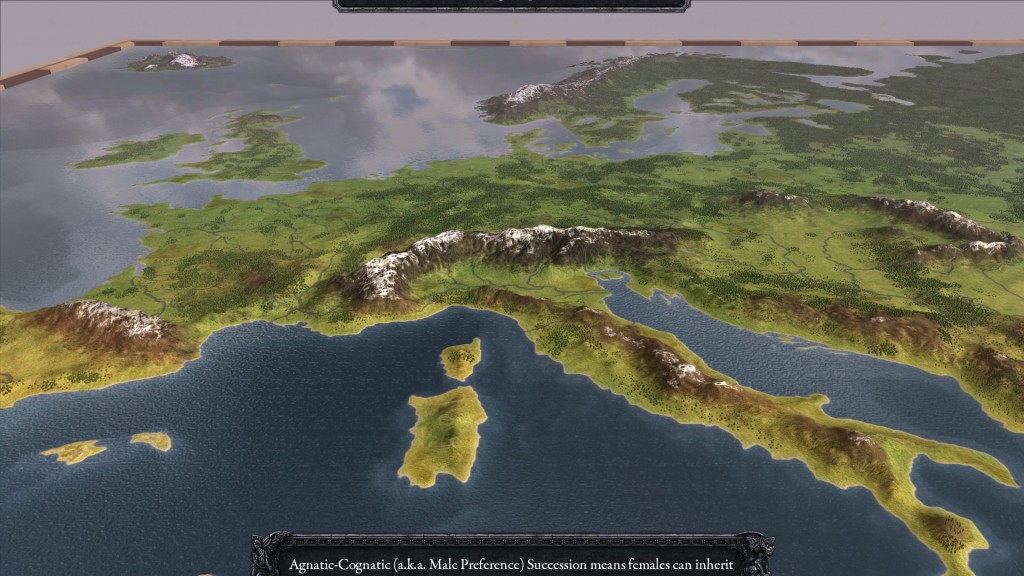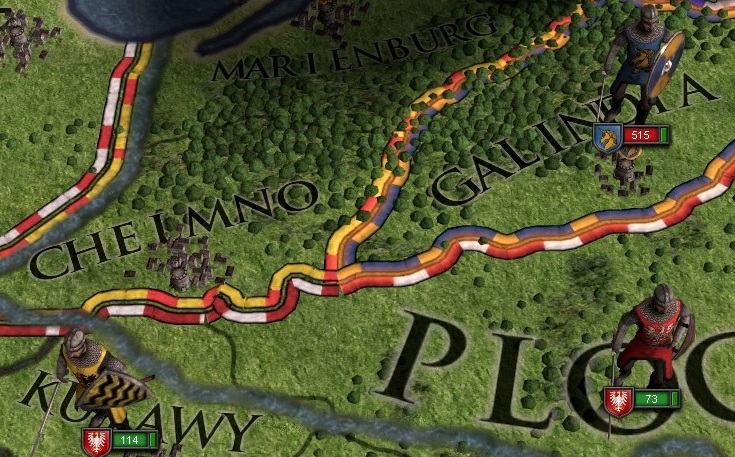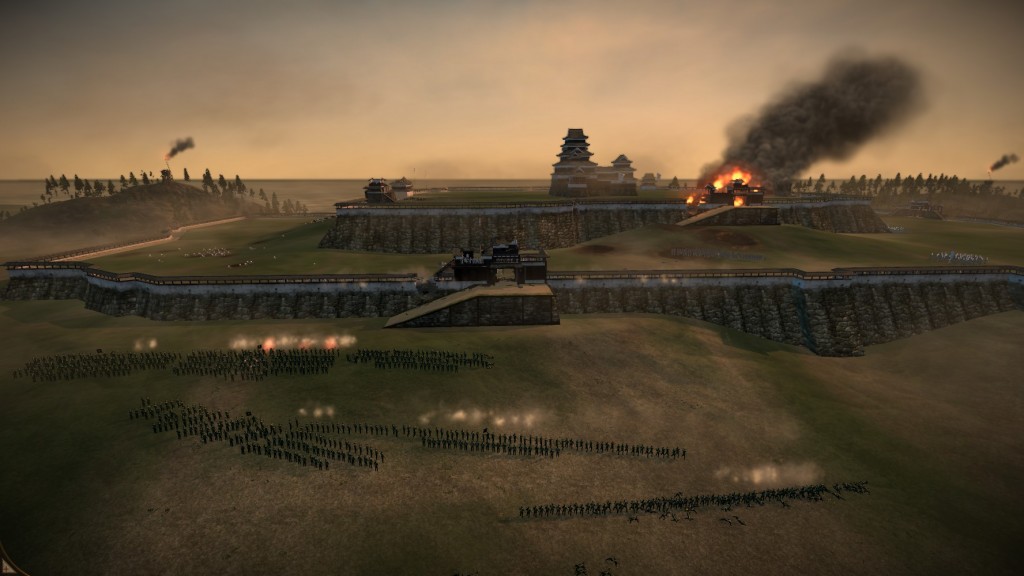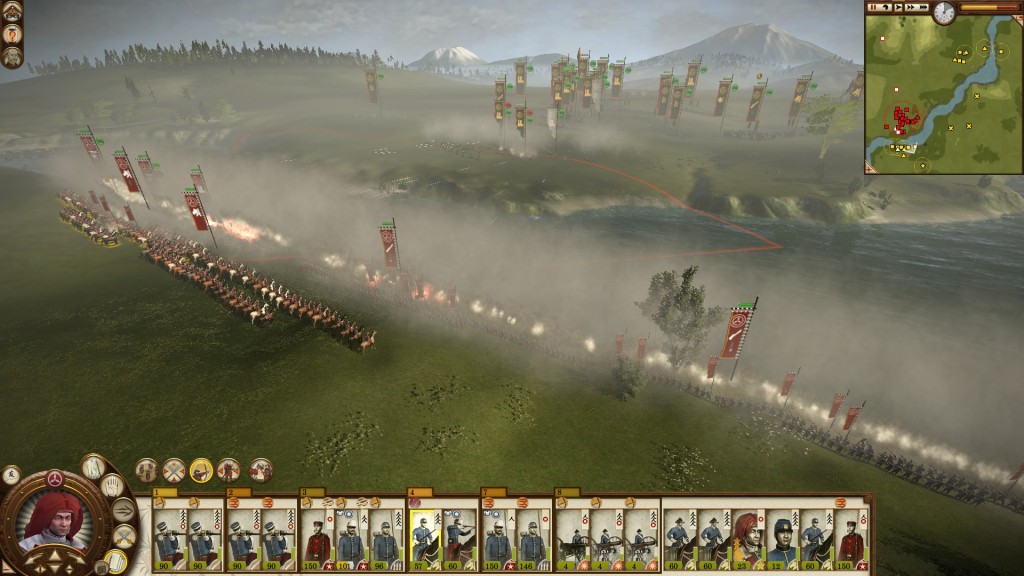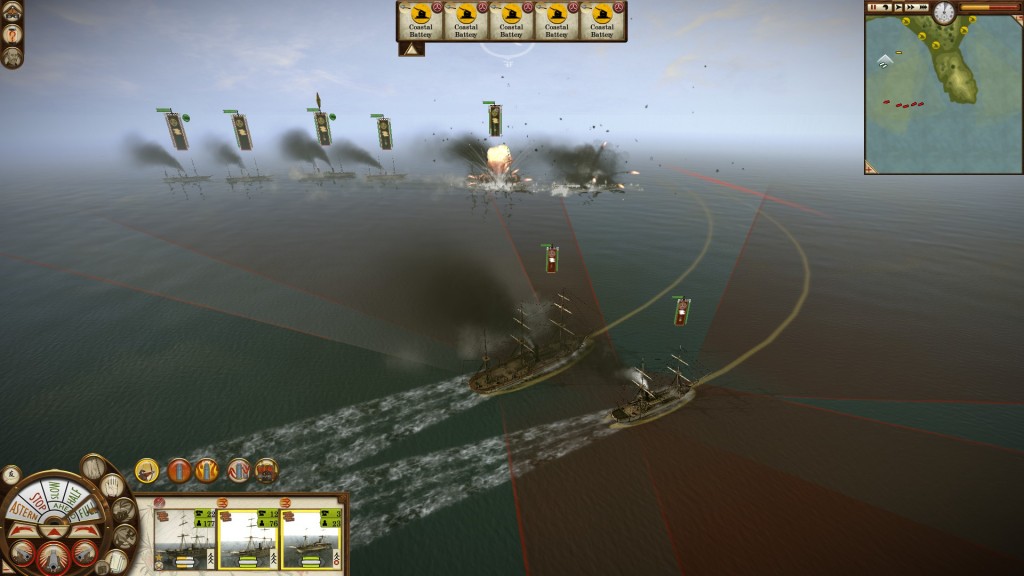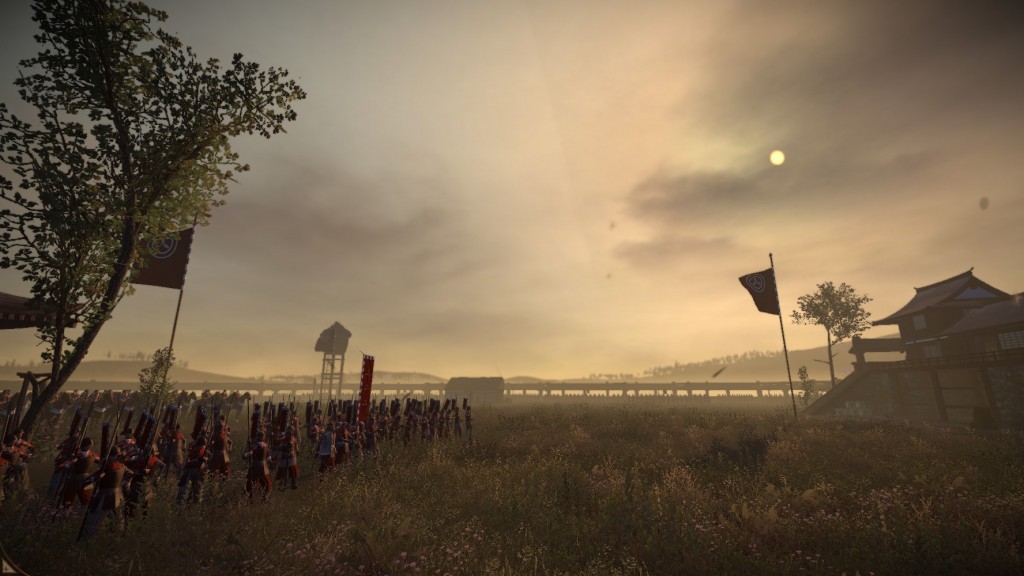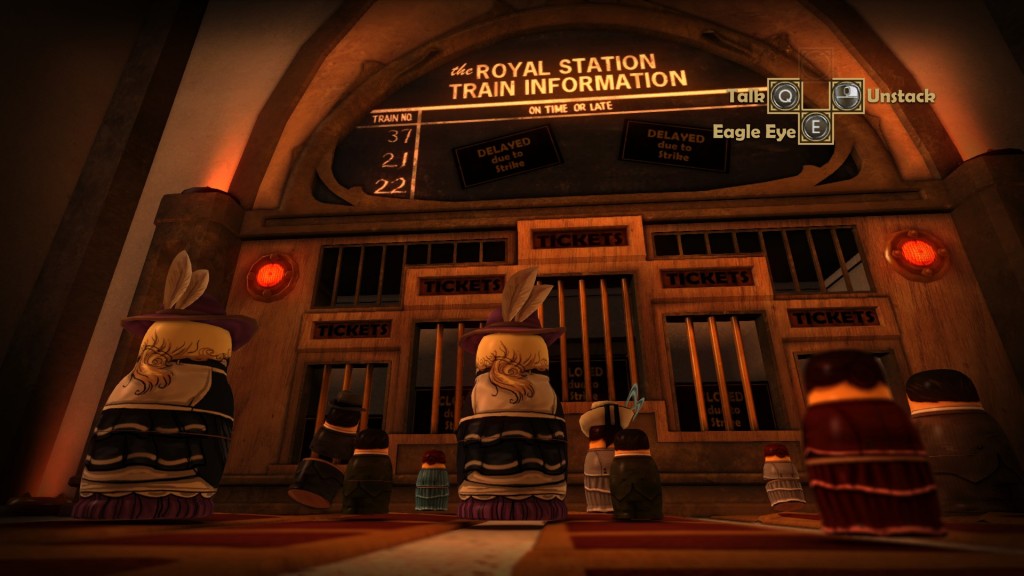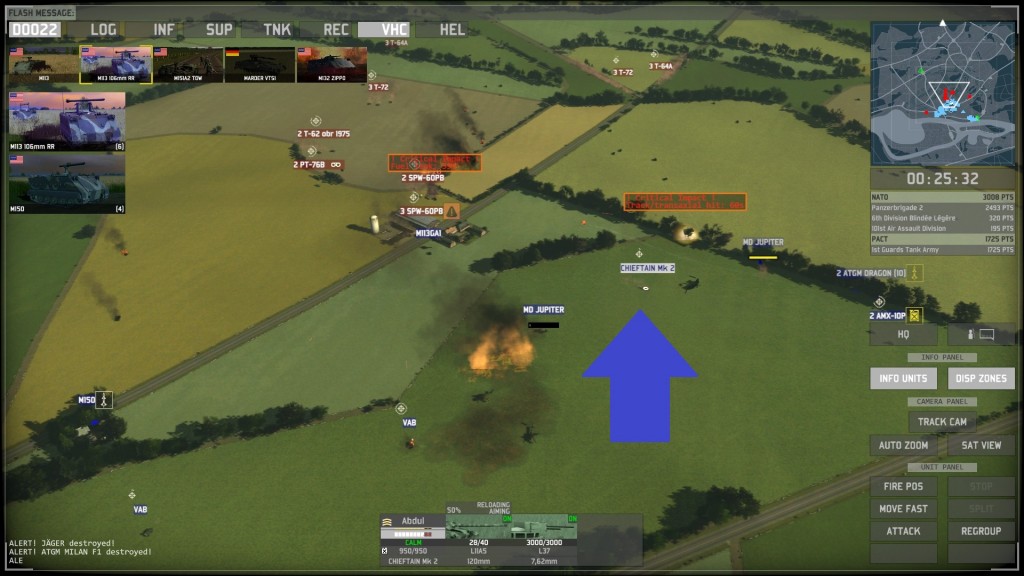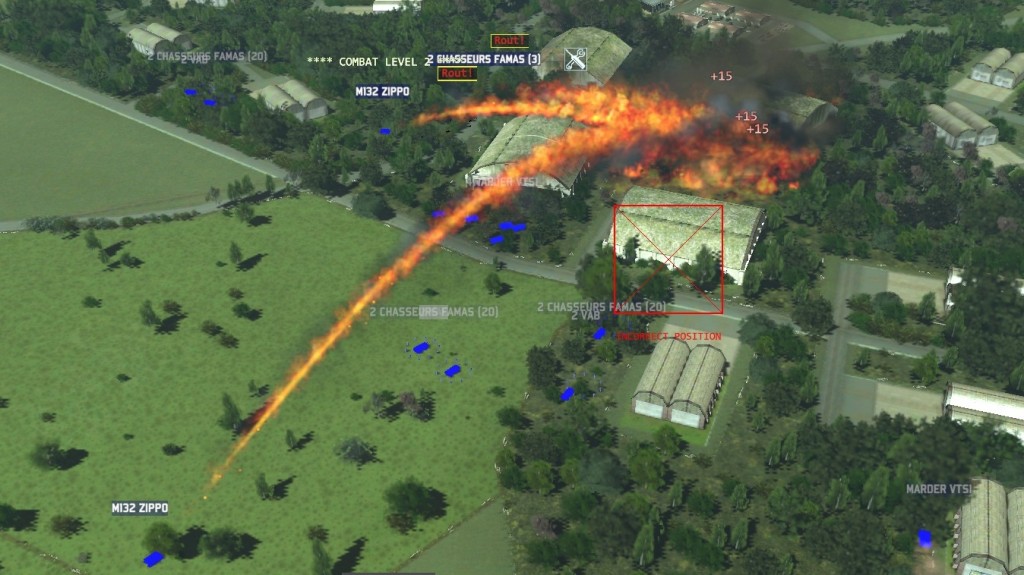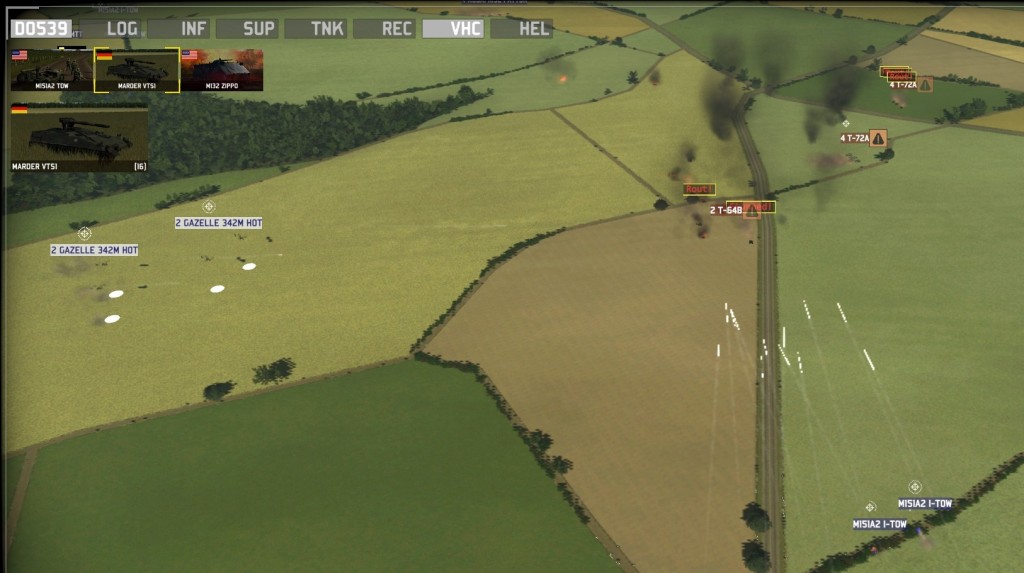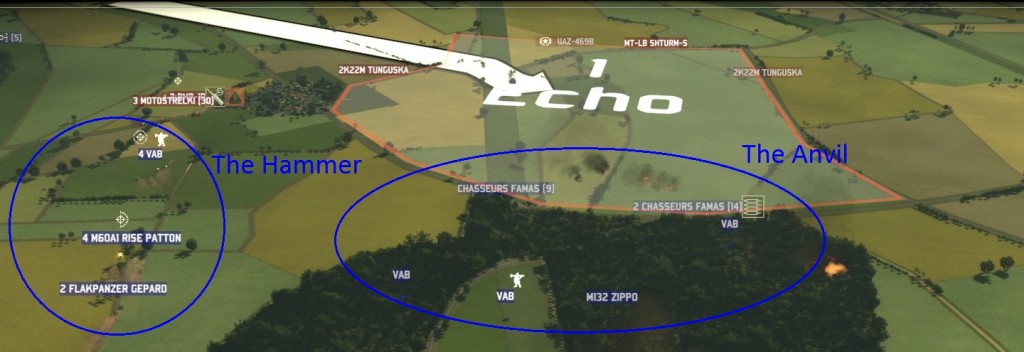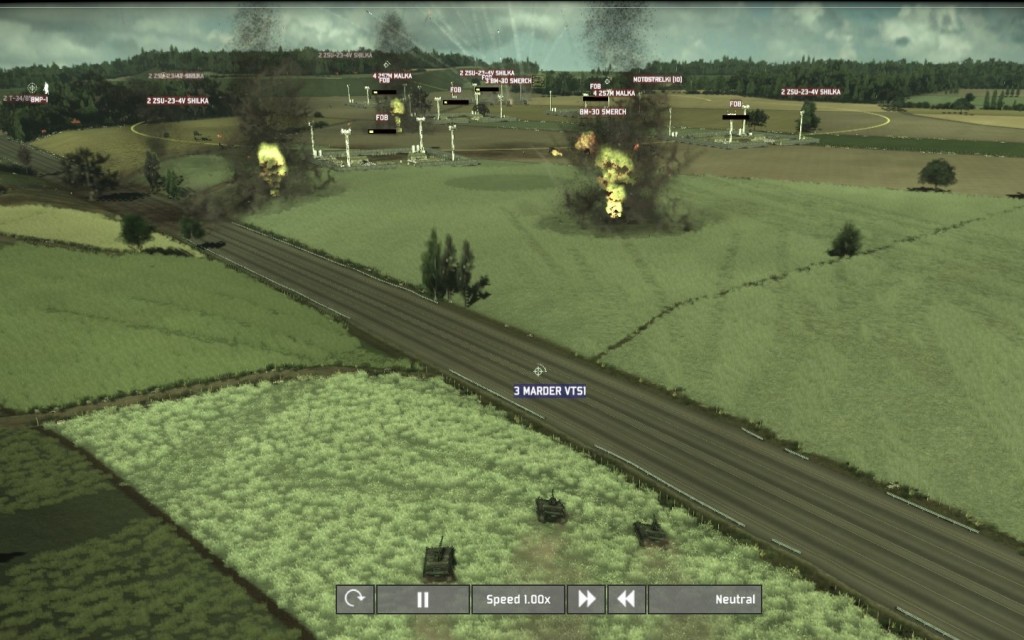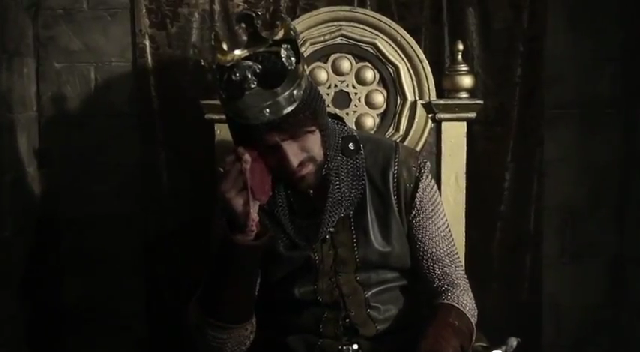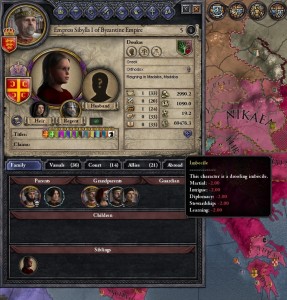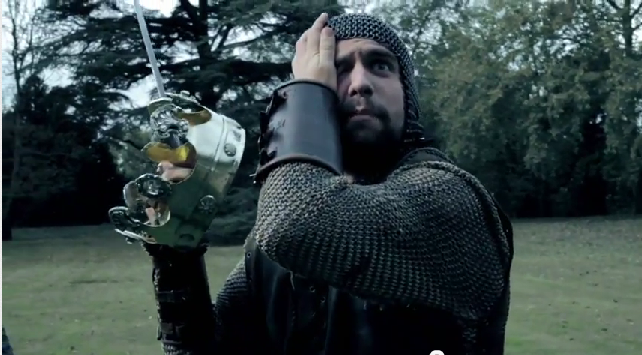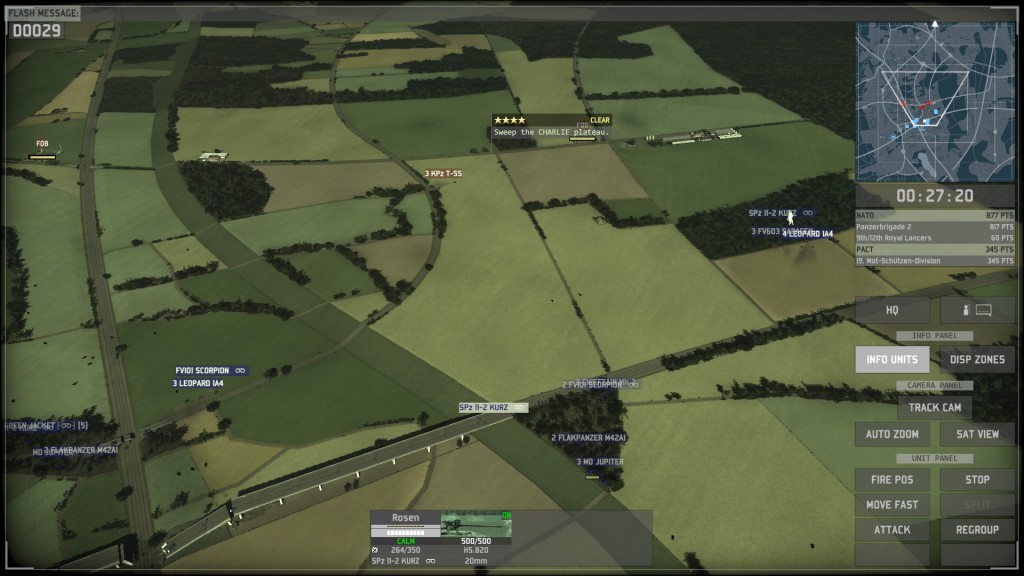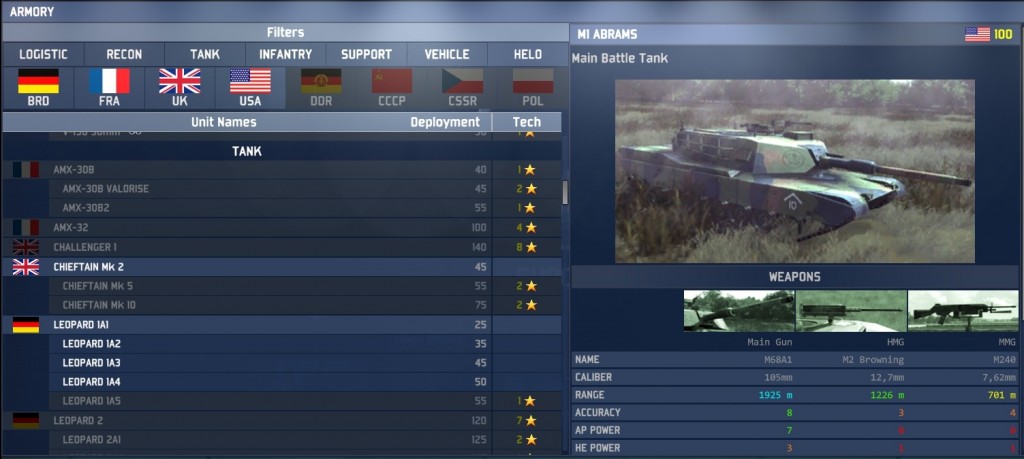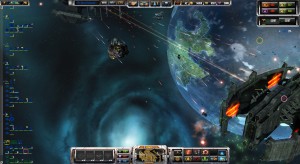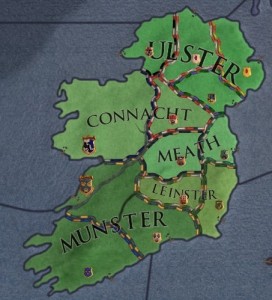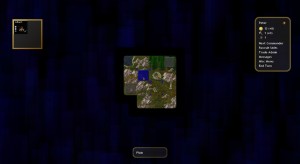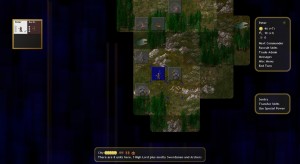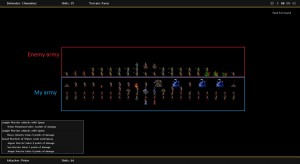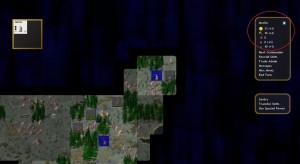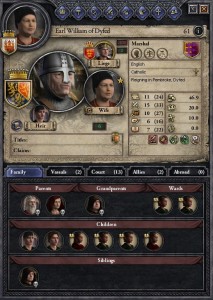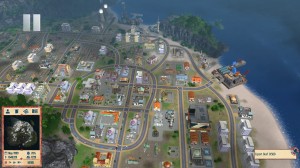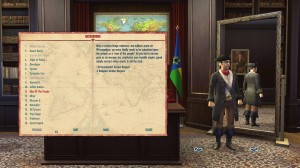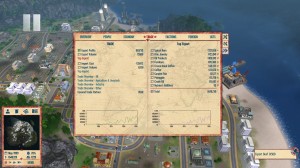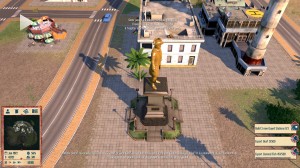Captain’s log, starship Kestrel
Stardate 2012.09.22
Sector Four: Engi Homeworlds, Continued
The Kestrel’s exploration of Sector Four continues, with mixed results.
The good news: beefing up my weapons, and being willing to fire off a missile at the start of combat, have paid off. The next enemy I encounter goes down in flames.
The not quite so good news: the next shop I find is a re-run of the previous one. It has a drone control and crew teleporter for sale, but I don’t have enough scrap to buy anything without selling my spare equipment. This time I grit my teeth, sell a spare missile launcher, and buy the drone control unit. At least I can get some immediate use out of it. Hopefully I’ll find a crew teleporter – and some crew to actually teleport! – later in the game.
I make it to the exit with the Rebel hot on my heels, and head into Sector Five.
Sector Five: Rebel-Controlled Sector
The drone control unit promptly pays off, when I answer a distress beacon:
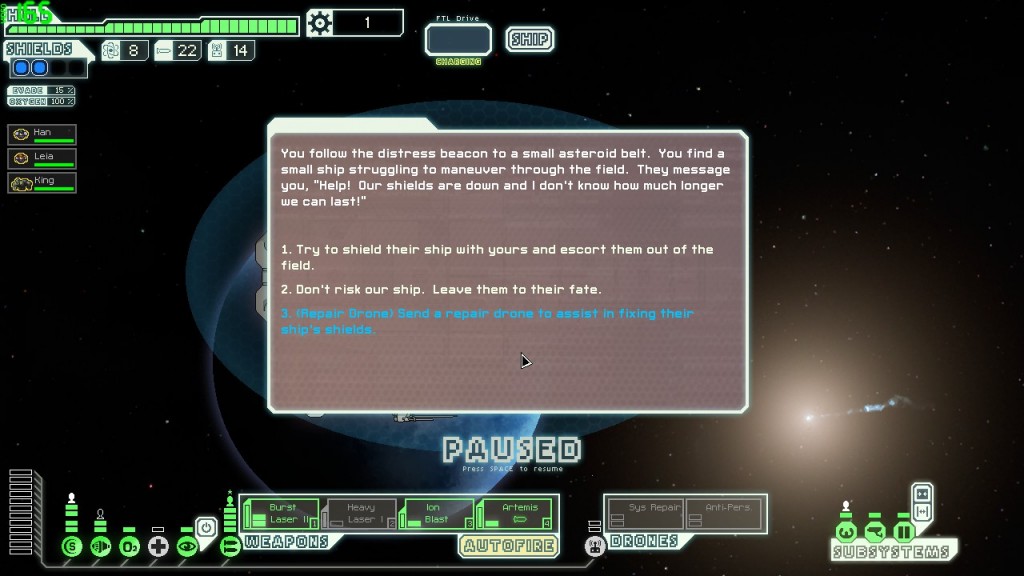
Sending in the drone leads to a little bit of hull damage, but I earn 42 scrap as a reward. At the next beacon, I take on a quest that requires me to travel to the far top-right corner of the sector:
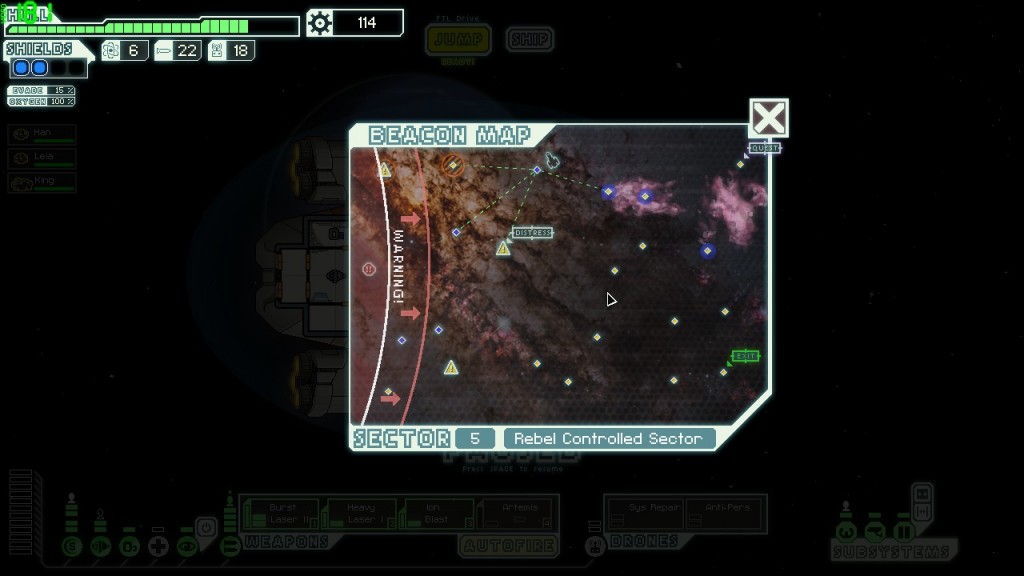
Along the way, I deal with a Rebel scout before it can jump out to warn the fleet of my presence, fight off a boarding party with a big helping hand from my anti-boarder drone (good thing I bought that control unit!), and find a shop with both a crew teleporter and recruitable crew! I hawk an unused repair drone to pay for the teleporter and a Mantis of my own, name of Sem. Remember, Mantes are the hand-to-hand specialists of the game, so this should give me a big edge in boarding actions.
I take the time to play around with the Kestrel’s loadout:
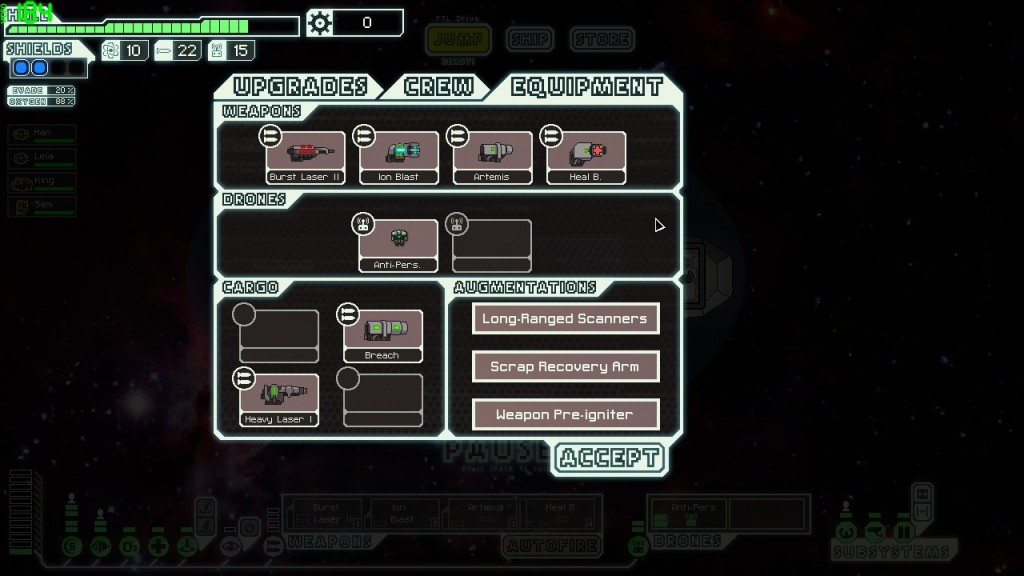
The weapon on the far right is a healing bomb, which I can deploy (at the cost of 1 missile ammo) to either my own ship or to an enemy ship to heal friendly crew in the vicinity. That means I can send over, say, Sem the Mantis and King the Rockman to slaughter the enemy crew, teleport in healing bombs as necessary to keep Sem and King alive, and then earn more scrap from capturing the enemy ships alive!
Completing the quest lets me offload some drone parts for scrap, and defeating another Rebel gives me enough scrap to return to the shop and hire an Engi crewman named Maradine:
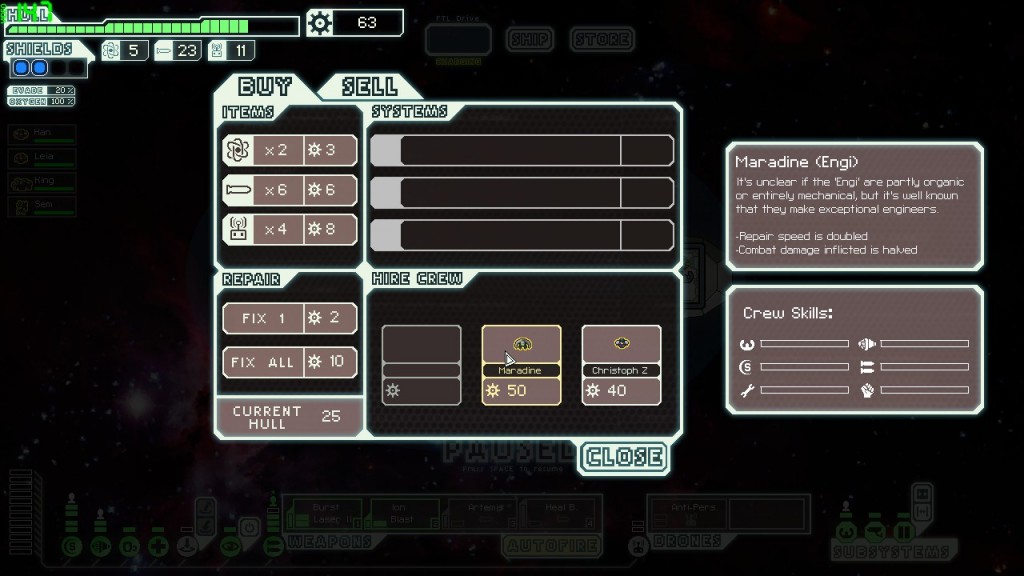
On my way to the exit, I run into a Rebel who gives me a taste of my own planned medicine and boards me. Sem, King, and my drone deal with the boarders, then Sem and King head over for some payback.
The first try does not go as planned, thanks to a certain Captain forgetting to actually charge the healing bomb before sending Sem and King over. I quickly teleport the two almost-dead crewmen back, heal them up in the medbay, then send them back. The enemy ship has no medbay, and the enemy crew has had no chance to heal. The second trip goes much better. The scrap I earn from the intact, lifeless Rebel ship (60+) is about double what I’d have previously earned.
I make it to the exit, and onto Sector Six.
Sector Six: Rebel-Controlled Sector (another one)
The first few Rebel ships I encounter are AI-controlled, and hence pointless to board (as well as dangerous; they have no oxygen!). My luck turns when I run into a Rebel whom I can board. Killing the enemy crew (one of whom, I notice, is named Geryk) lets me liberate a Mantis prisoner named Monsvik, who joins my growing team. This is good – it lets me form a dedicated away team of two Mantes, while King the Rockman can stay back and man the Kestrel’s shields.
At the next shop I encounter, I pick up a fire bomb in preparation for a certain battle later in the game. I also sell my venerable heavy laser and pick up a level 1 burst laser instead – the heavy laser does 2 damage to hulls but only 1 to shields, whereas the burst laser fires twice, dealing 1 damage per shot and granting a second chance to hit. The Artemis missile launcher goes into storage:
The new configuration seems to work well, letting me chew through enemy shields while preserving precious missile/bomb ammo. With my newfound love for boarding actions, I upgrade my sensors so I’ll be able to map out the enemy crew. Sector Six ends without incident, as I again just barely beat the Rebel fleet to the exit. I’m getting better at this!
Sector Seven: Zoltan Homeworlds
We’re almost there. Just this, and then the gauntlet in Sector Eight. Stay on target. Stay on target…
Our first encounter is hostile, as a Zoltan ship shoots first and asks questions later. Luckily, its defences are poor. My pre-ignited lasers make short work of its shields and weapons, and injure the crew. Then, since Zoltan are lousy in boarding actions, my Mantes teleport over to finish the job. When the dust settles, I have more scrap than I’ve ever seen in one place. And luckily, there’s a shop right next door:
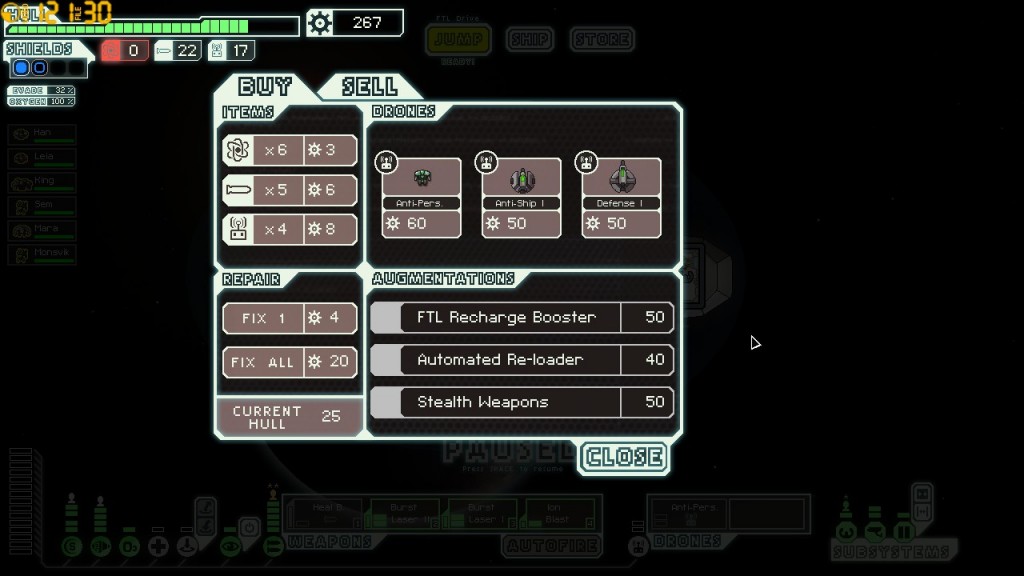
I refuel, and buy a level 1 defence – i.e. anti-missile –drone. Seeing another shop right after that, I head over… and see a level 2 defence drone. Oops. The level 2 requires more power, but is also more useful, meaning I wasted the scrap on the level 1 drone. Oh well. I trade it the level 1 and buy the level 2. I then promptly forget to upgrade my drone control unit, leaving me unable to use my new toy.
One battle later, it ceases to matter. After killing the enemy boarders, setting their spaceship on fire, and lasing the surviving crew to death, I’m swimming in scrap again (240 scrap). So much so that when I get the option to pick up a new augment, a “reverse ion field” that gives me a 20% chance to shrug off incoming ion fire, I ditch my scrap recovery arm (+10% to collected scrap). This close to the end, I want maximum survivability.
The next fight chews me up badly – the enemy is strongly shielded and armed to the teeth, with a missile launcher and assorted lasers. My defence drone II would have protected me– had I remembered about it. Eventually I do turn it on, resulting in a much easier fight… only for the enemy to flee before I can administer the coup de grace. No reward.
Crushing the next enemy, and harvesting plenty of scrap from a random distress beacon, provide some solace. One jump away from the exit to the final sector, I get into another tough scrap, but walk away with a new piece of loot: a level 2 hull smasher laser, a more powerful, less energy-efficient cousin to my starting burst laser. I’ll have to drop something to pick up the hull smasher laser, but what?
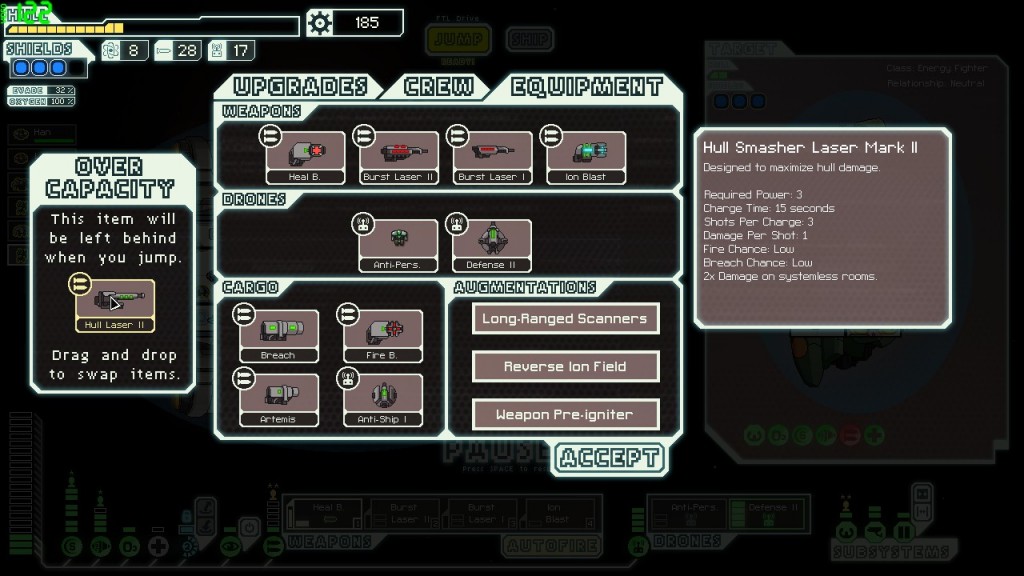
On that note, as I mull which piece of kit would be most useful against the final boss, it’s time for me to wrap up this instalment of the LP. And to hedge my bets, I finish by backing up my saved game (aka save-scumming). This goes against the intent of the designers – FTL only allows you a single, automatically overwritten save slot – but this close to the final boss, I’d like the ability to retry different tactics, and different loadouts, without starting again from scratch.
I’ll see you at the final battle.
